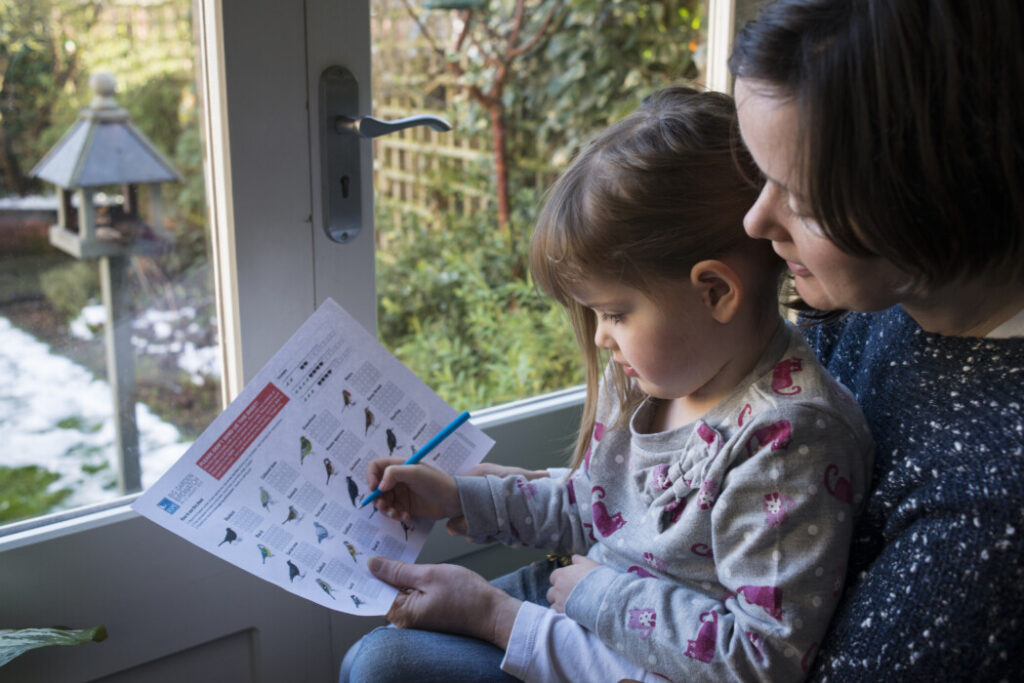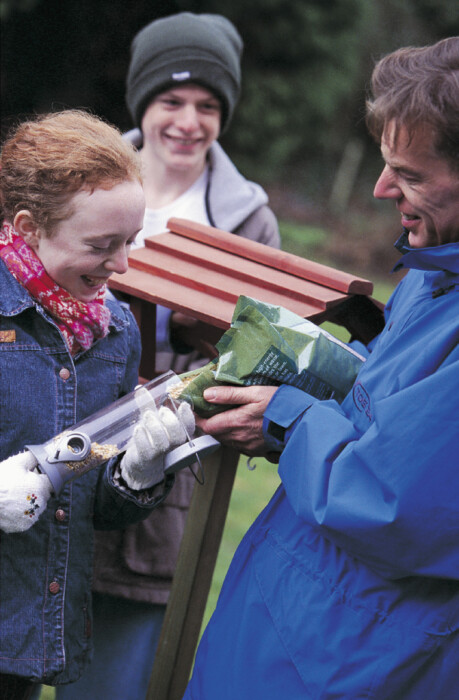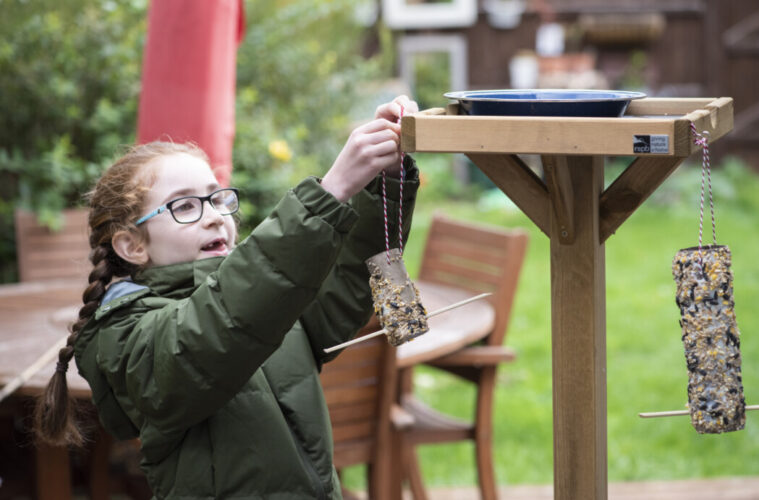In just a few weeks time, families across Bath, Somerset and Wiltshire will join together to take part in the UK’s largest citizen science project – the RSPB’s Big Garden Birdwatch. It’s a great opportunity for adults and children alike to learn more about the nature on their doorstep. Everyone can join in – just spend one hour watching and recording the birds you see in your garden, from a balcony or in your local park.
What will you see?
Now in its 43rd year, the 2022 Birdwatch is happening on January 28, 29 and 30, and it’s easy to take part. Don’t worry if you don’t know your coal tits from your blue tits – there’s plenty of help available on how to spot the most commonly seen species. The RSPB’s bird identification guide at rspb.org.uk/birdidentifier is a quick way to confirm any spots you’re unsure about.

Last year, more than a million people volunteered an hour of their time to join in, including over 16,500 in Wiltshire and over 25,000 in Somerset. The house sparrow held on to its number one spot at the top of the national Big Garden Birdwatch rankings, and it was the same story locally. Blue tits and starlings were among the other most sighted birds in our gardens and green spaces.
Be one in a million
To sign-up for the Big Garden Birdwatch 2022, just go to www.rspb.org.uk/birdwatch and register. You’ll be sent a free Birdwatch guide containing a bird identification chart, so you’ll quickly be able to recognise some of the most common garden visitors. Also included are top tips to help you get the most out of your Birdwatch, and advice on steps you can take to help wildlife near you.
Pick one hour over the weekend of January 28-30 and simply make a note of the birds that land in your garden or local green space. Only birds that land should be counted, so ignore any still in flight. Avoid double-counting by only recording the highest number of each bird species you see at any one time – not a running total. At the end of your hour, remember to send the results through to the RSPB as every bit of information helps to build an annual snapshot of how our birdlife is doing.
Easy ways to give nature a helping hand
There are lots of simple ways to make your outdoor space more attractive to nature, as well as fun activities that are ideal for getting the whole family involved. Here are a few ideas to help you prepare for your Birdwatch:

- Start off small. Garden birds are some of the easiest to identify. Most will stick around long enough for you to get a good look and perhaps take a photo to go back to later.
- Open a bird cafe. Creating bird feeding stations in your garden is a great way to attract new visitors and encourage your feathered friends to stay for longer. Have a go at making your own recycled bird feeder by following these instructions. Provide food on a regular basis and birds will quickly learn it’s worth their while returning. Different feeders and food will attract different birds, so it’s worth experimenting. Good hygiene is also really important, so clean feeders regularly by washing them with a mild detergent. The RSPB has lots of information available online.
- Build your own bird bath. Birds need water for drinking and bathing, so be sure to put out clean water as well as food. It’s especially important in winter when some natural water sources might be frozen. Why not try making your own bird bath? Follow this step-by-step guide and your feathered friends will certainly thank you!
- Take a Wild Challenge. The Wild Challenge pages on the RSPB’s website have lots of fun activities designed to spark children’s interest in nature. Teach them how to spot the signs of spring, make a hedgehog cafe, a minibeast hotel or perhaps build a nest box.


